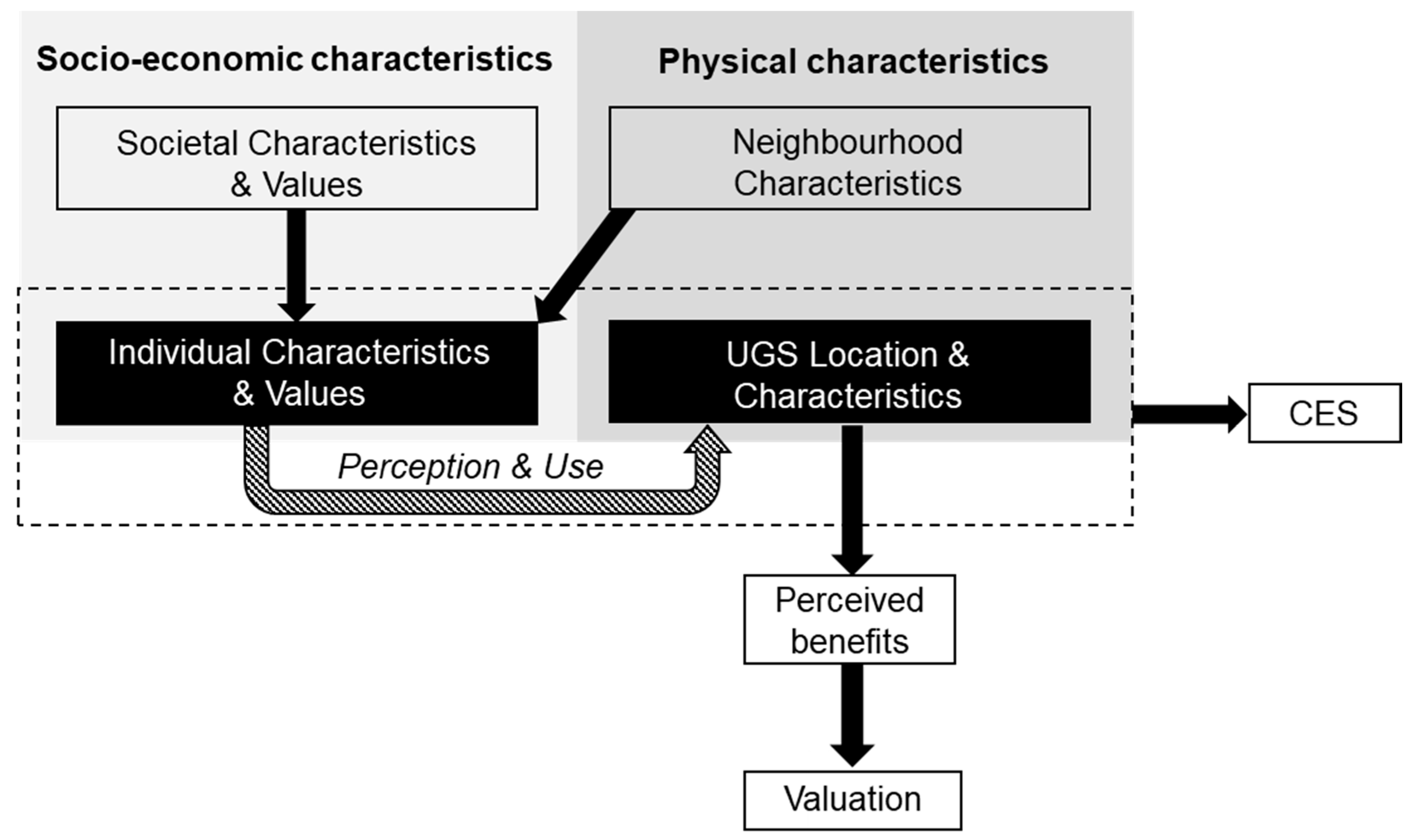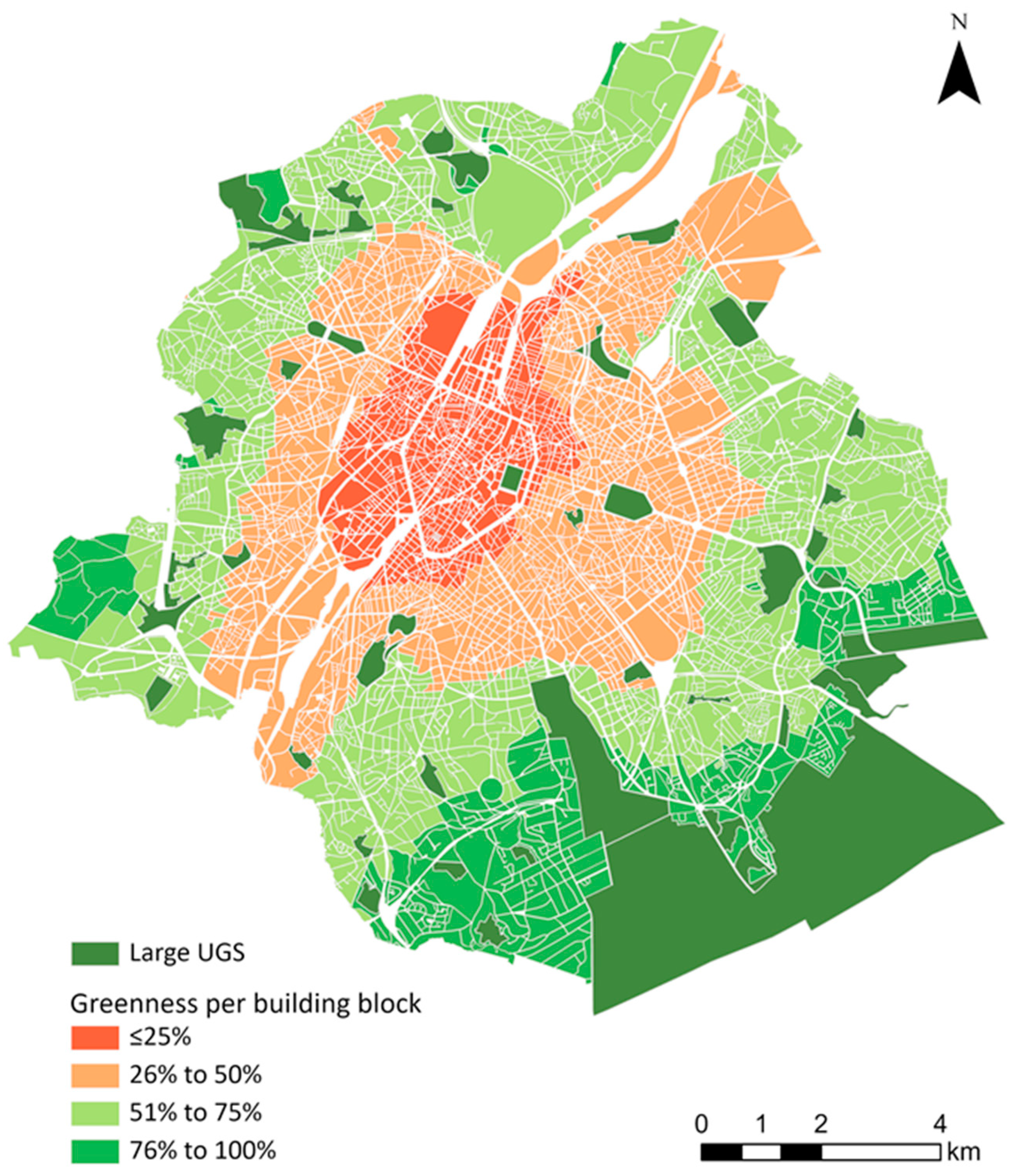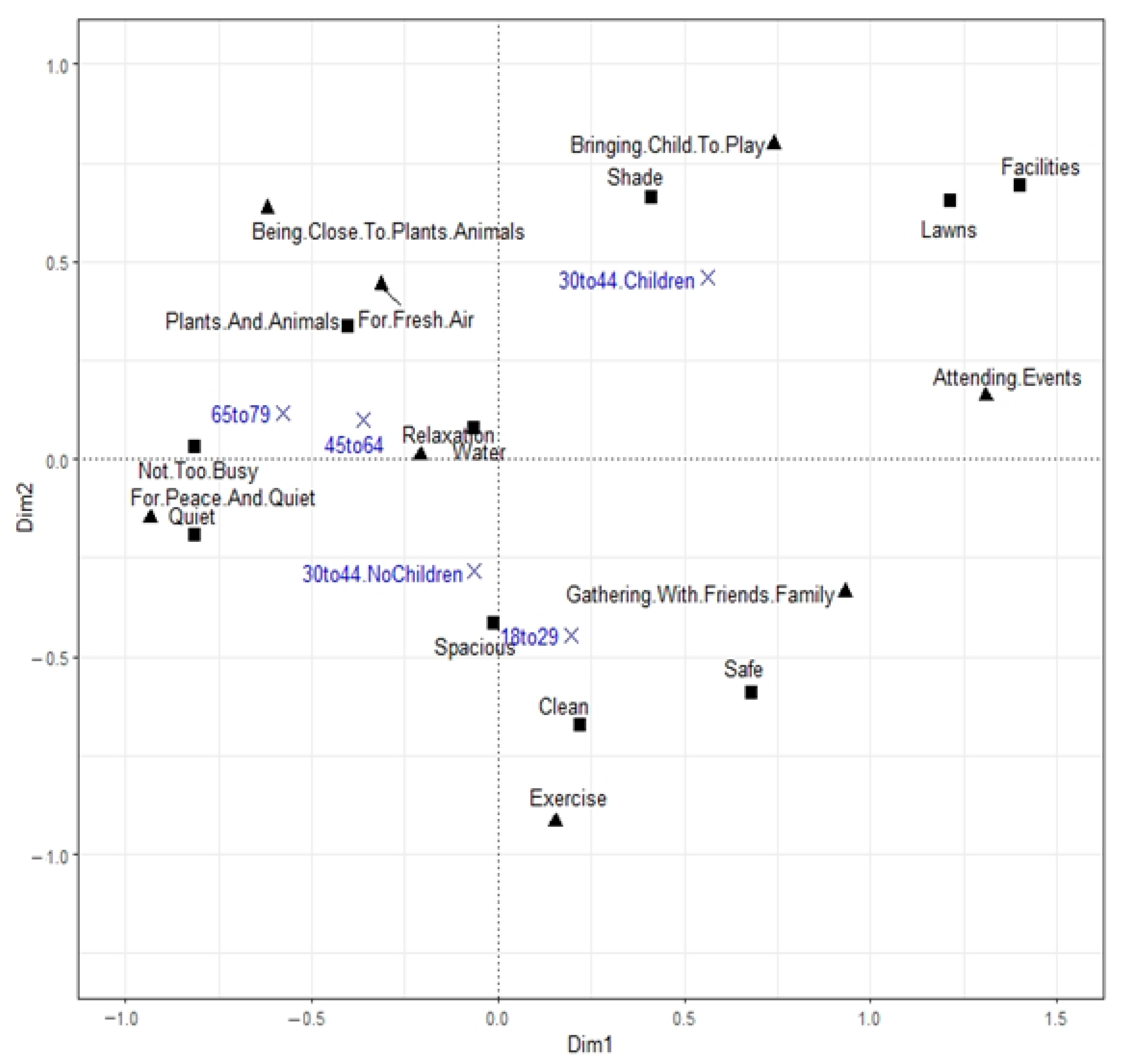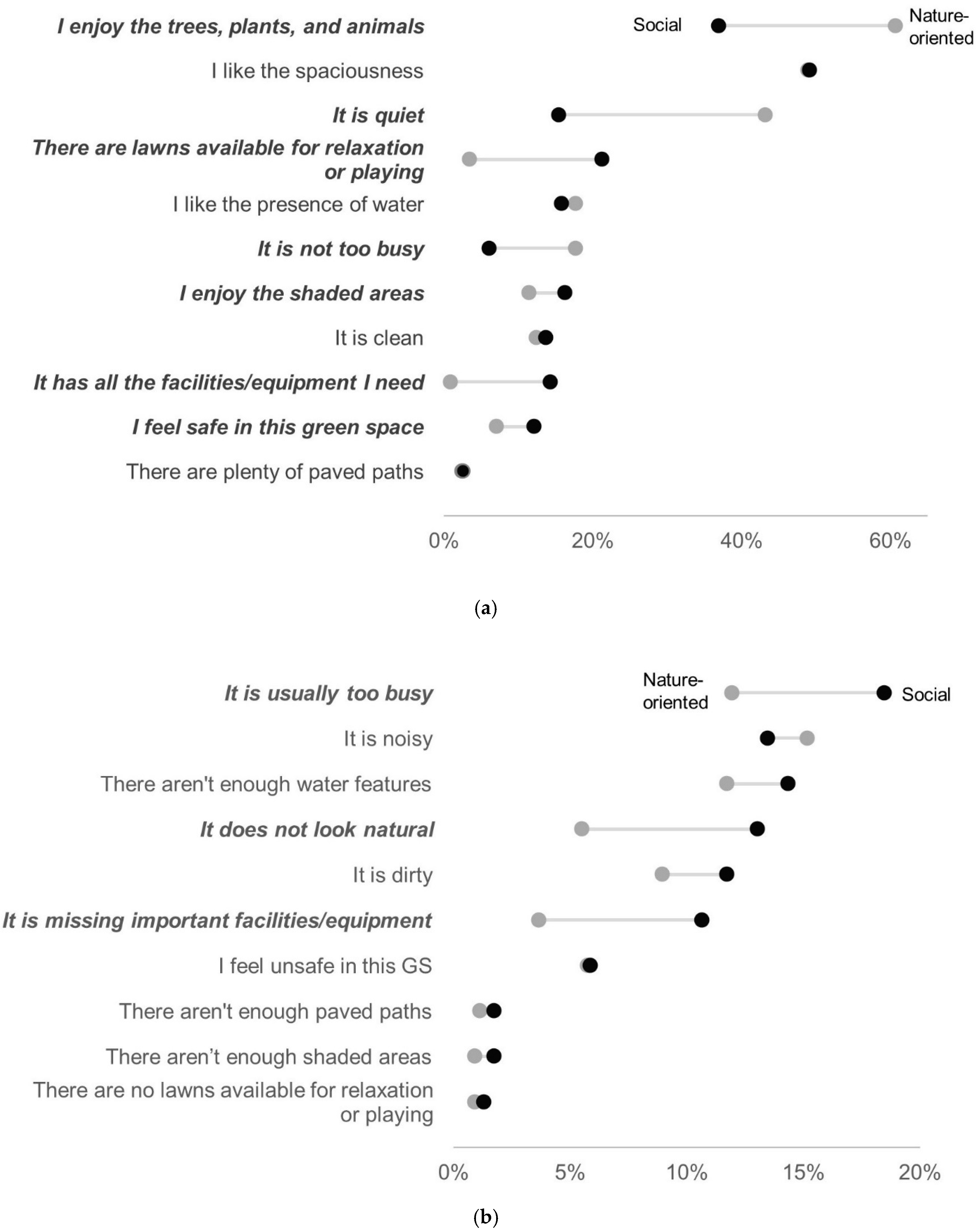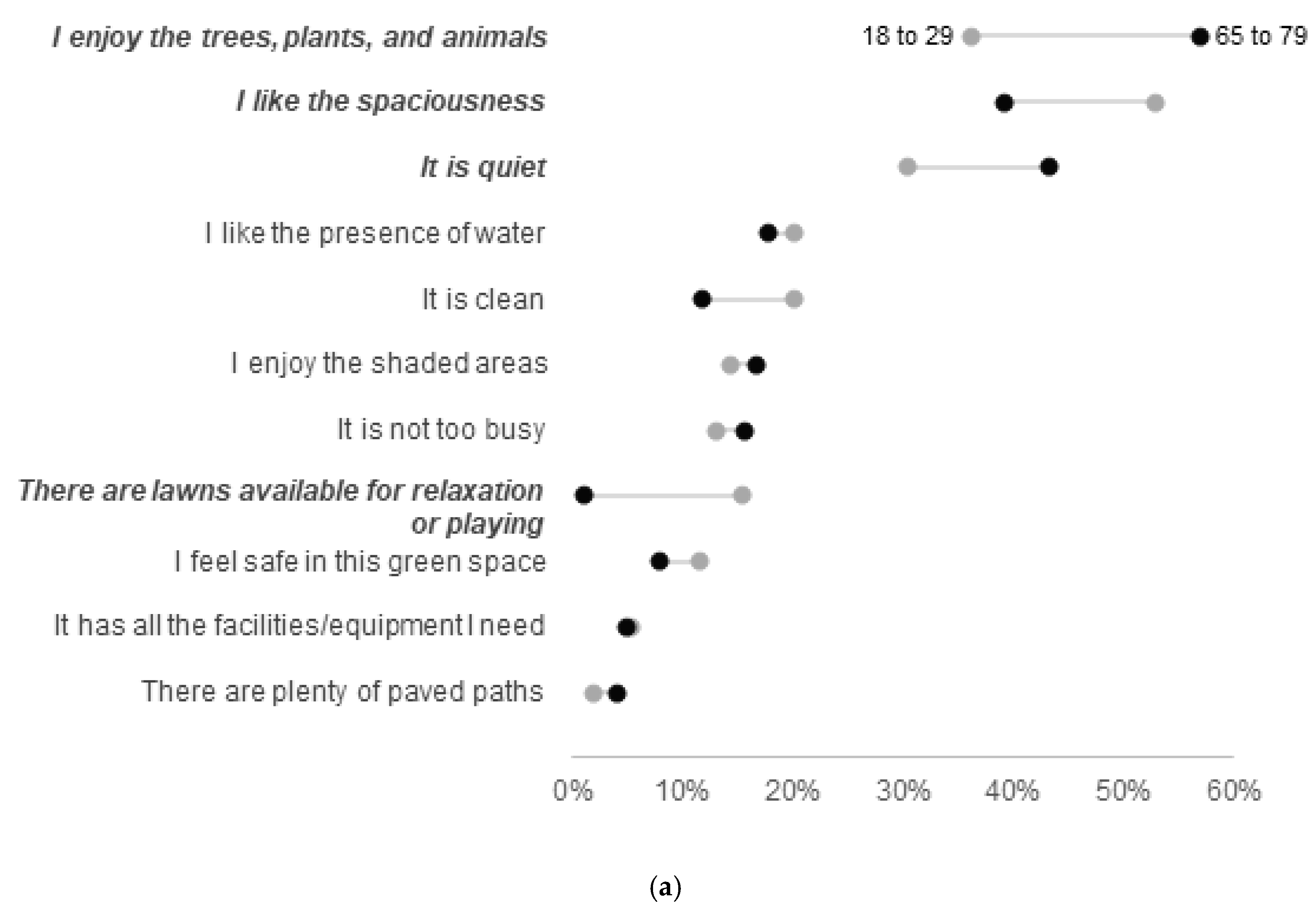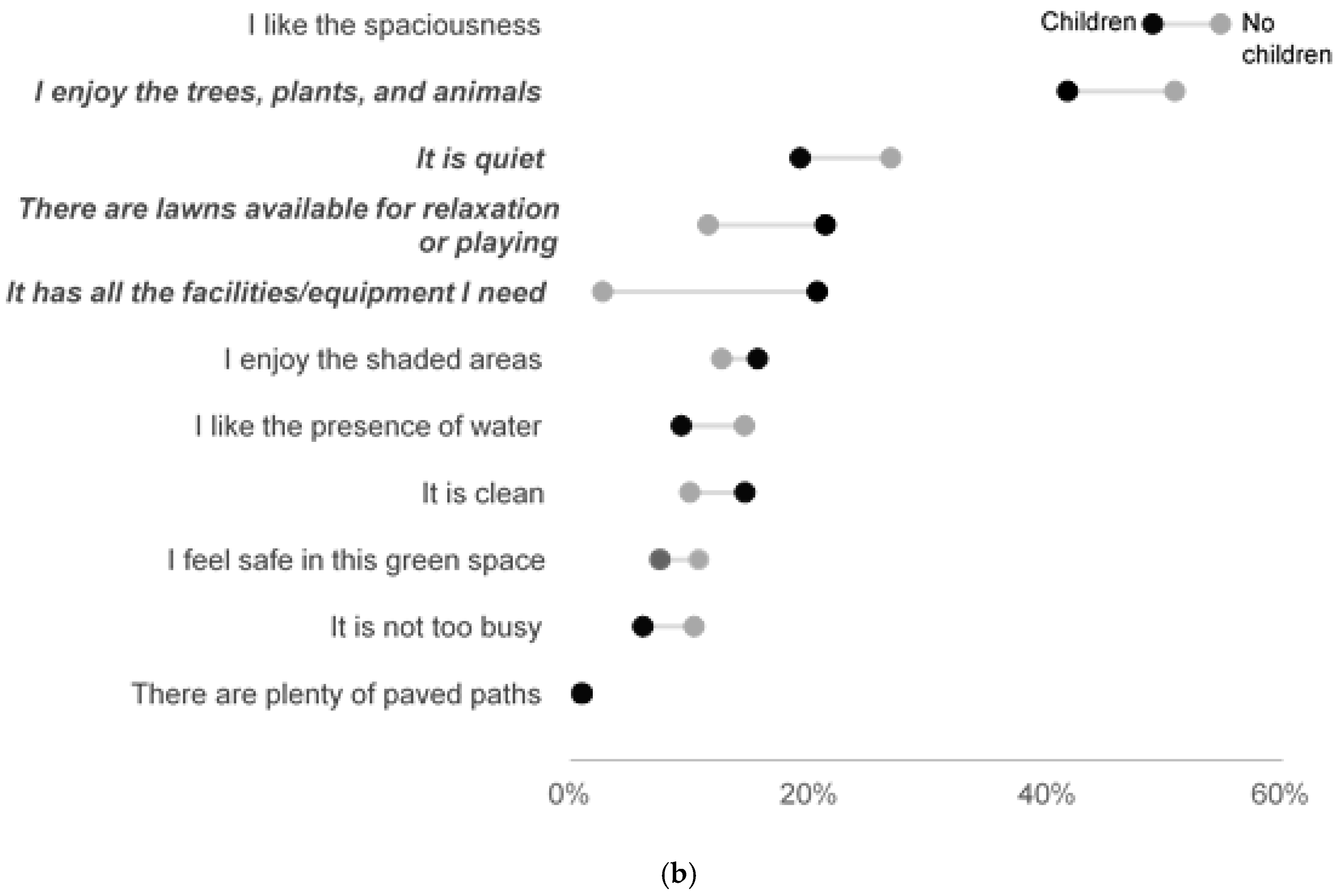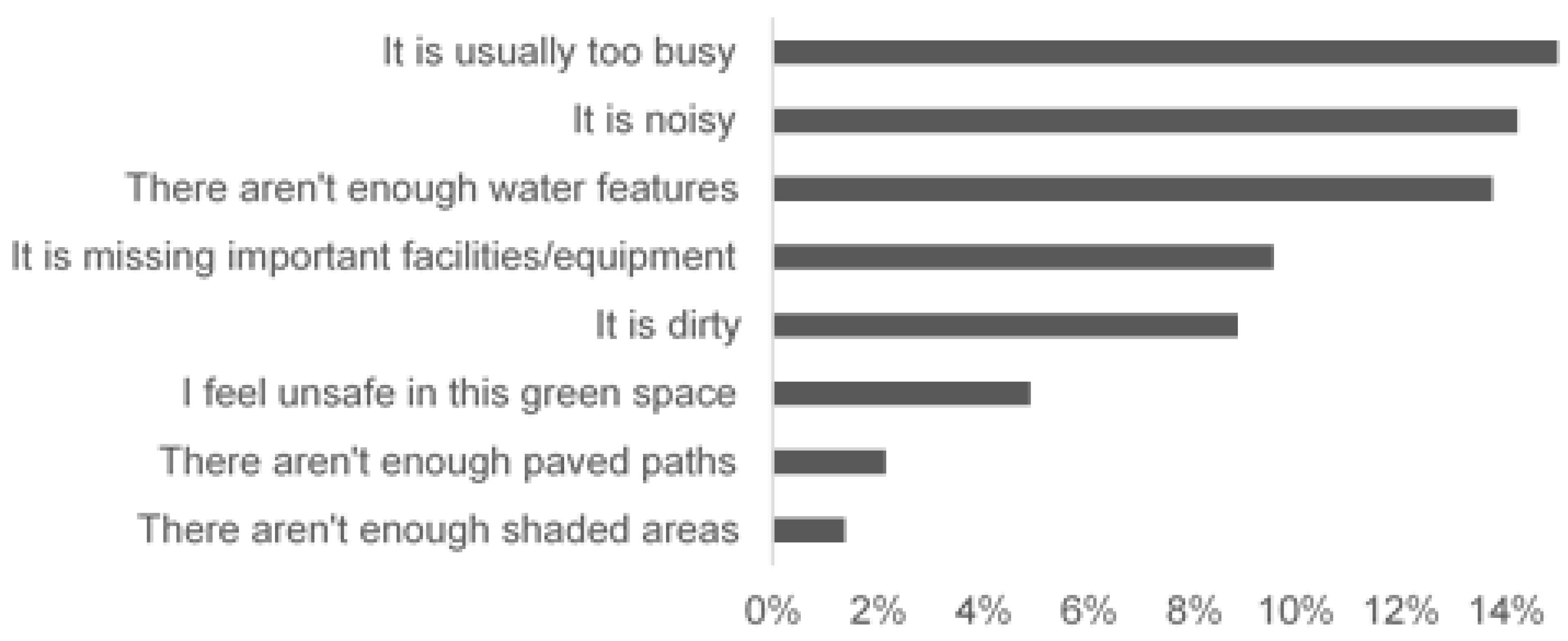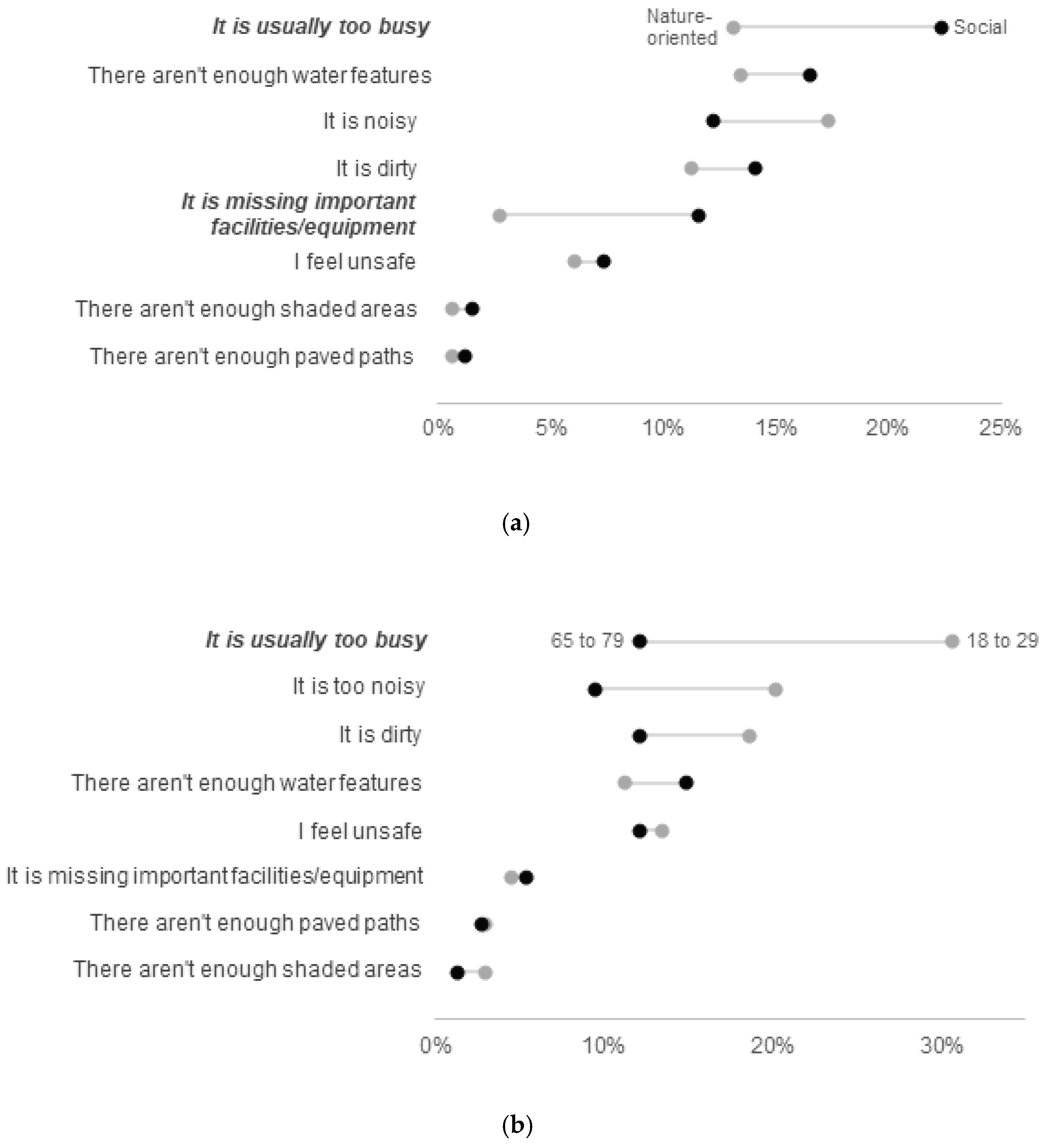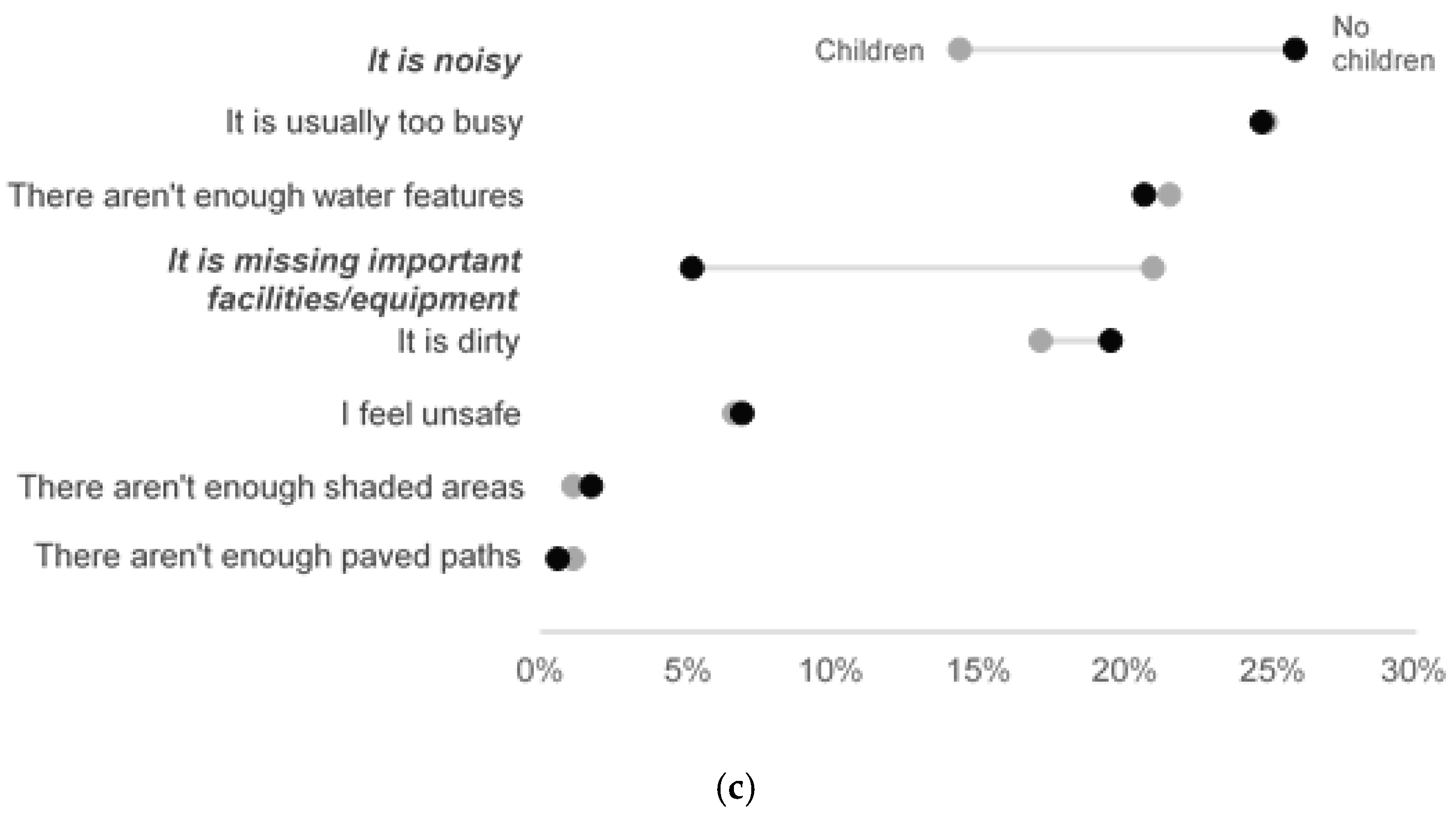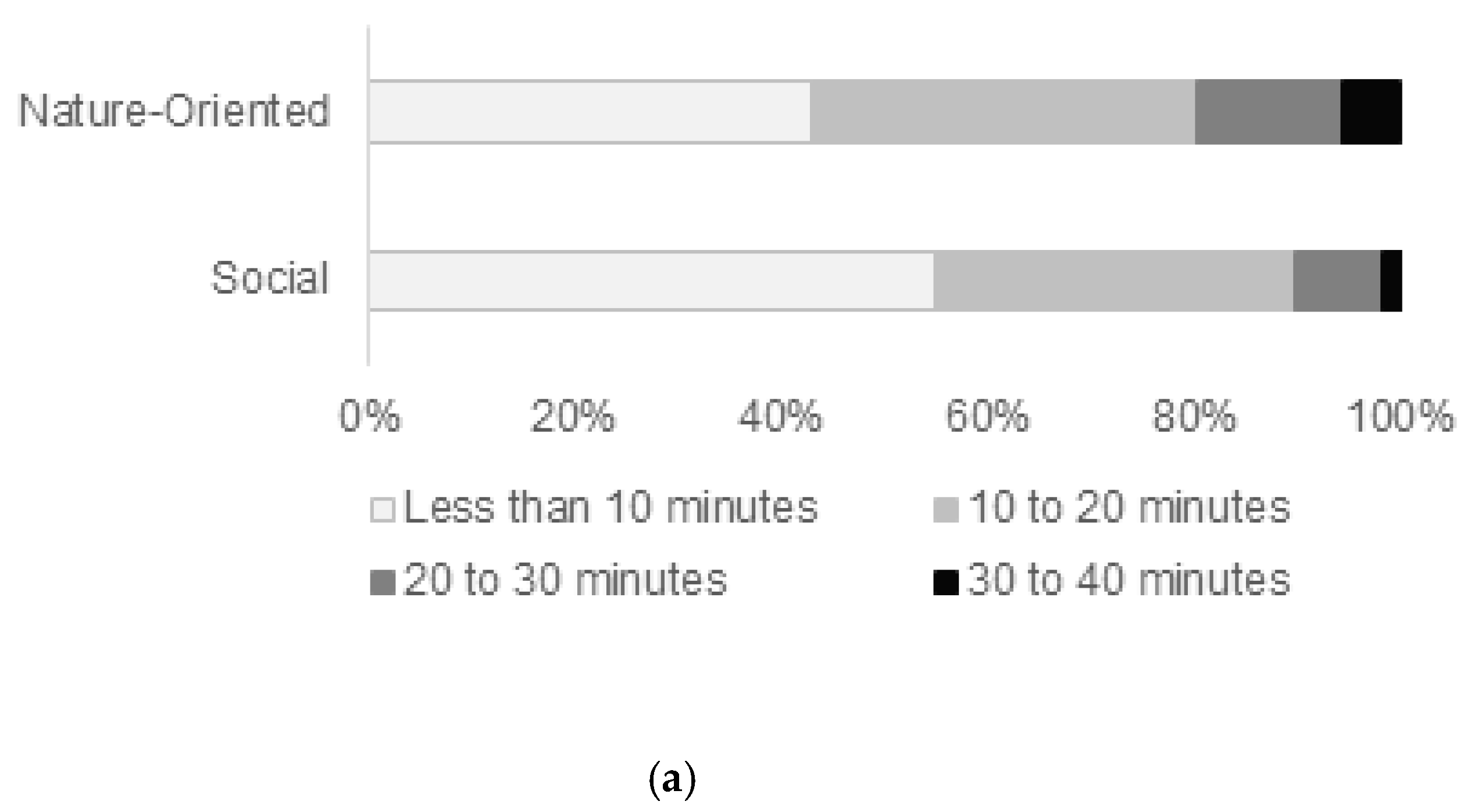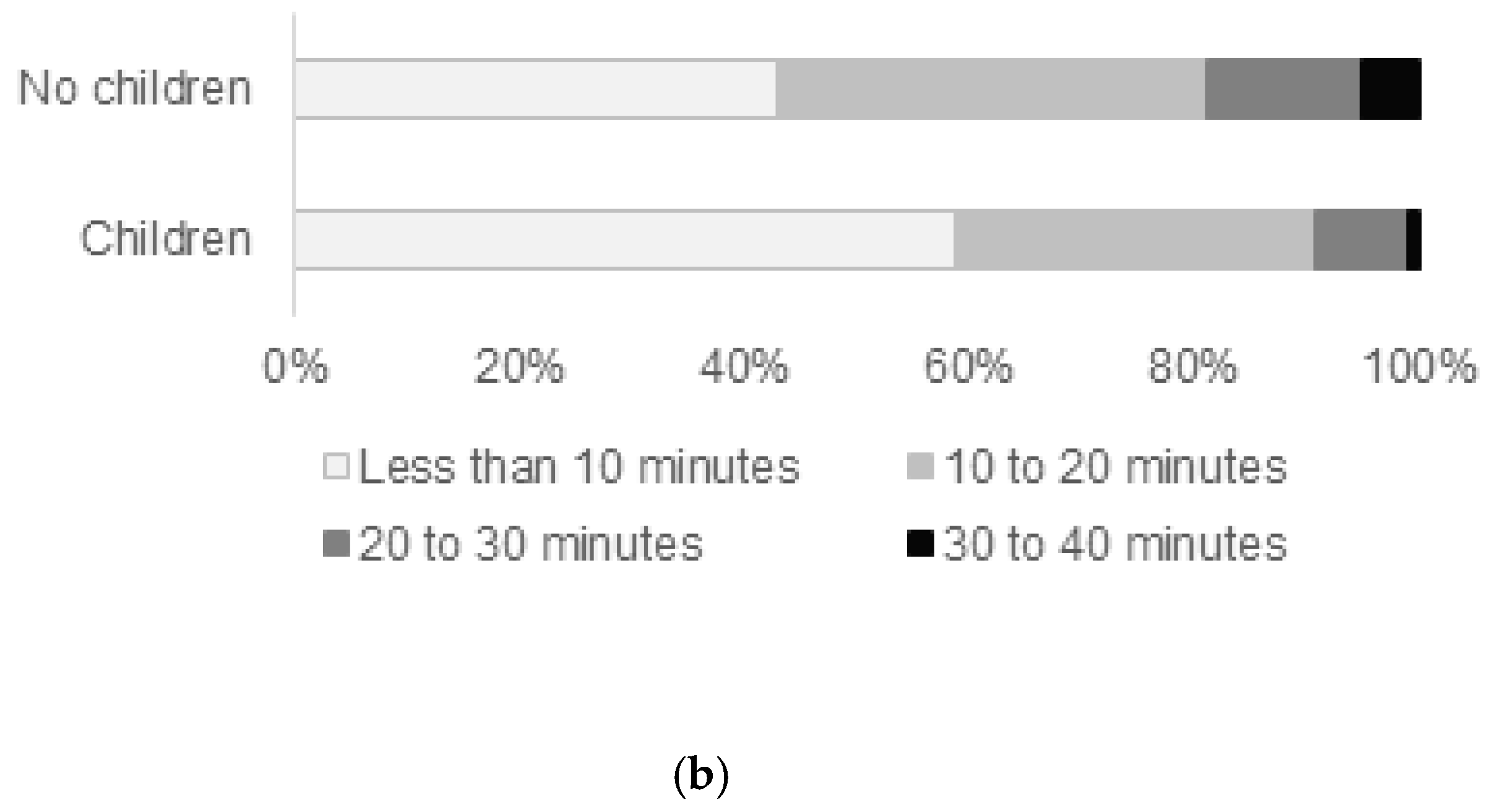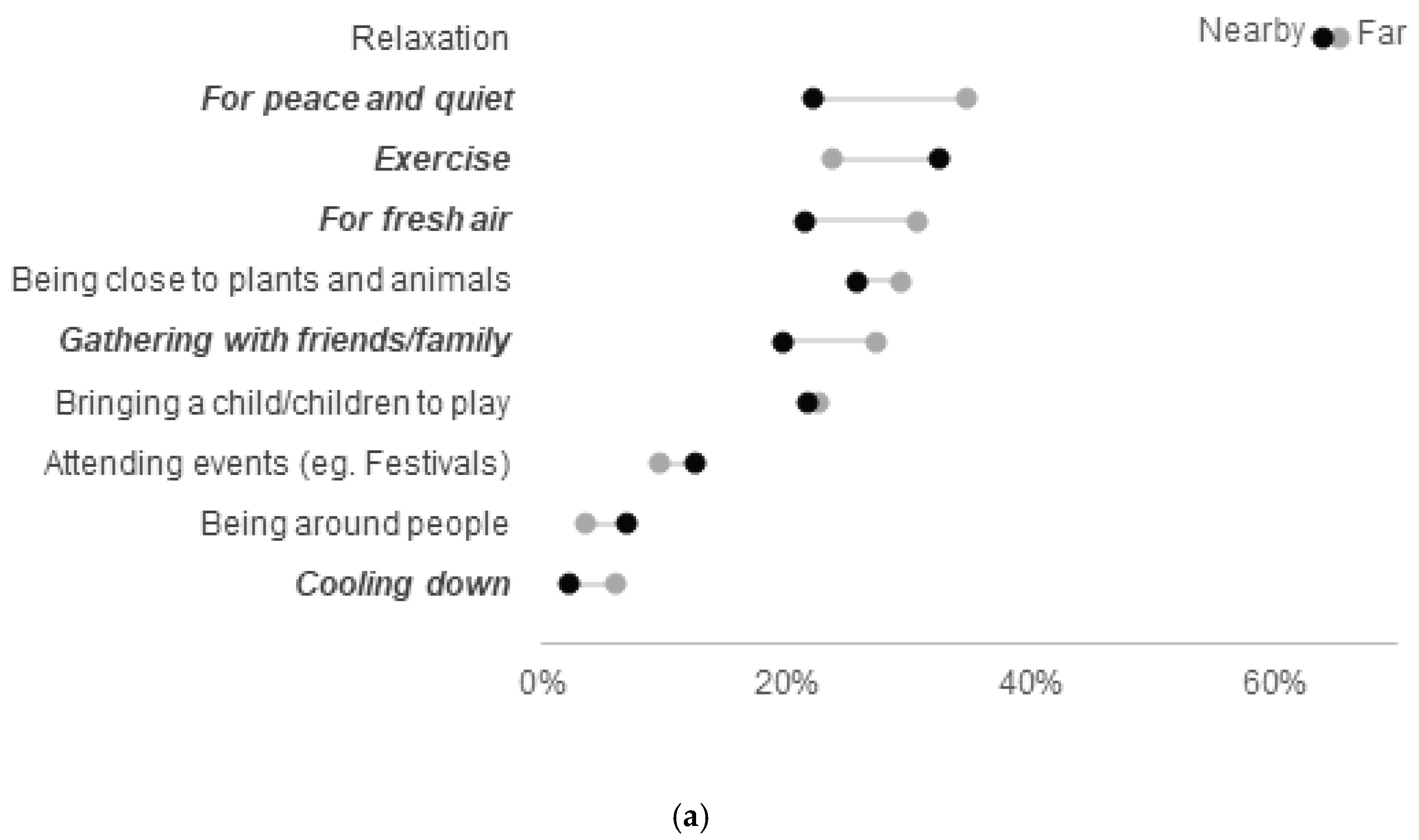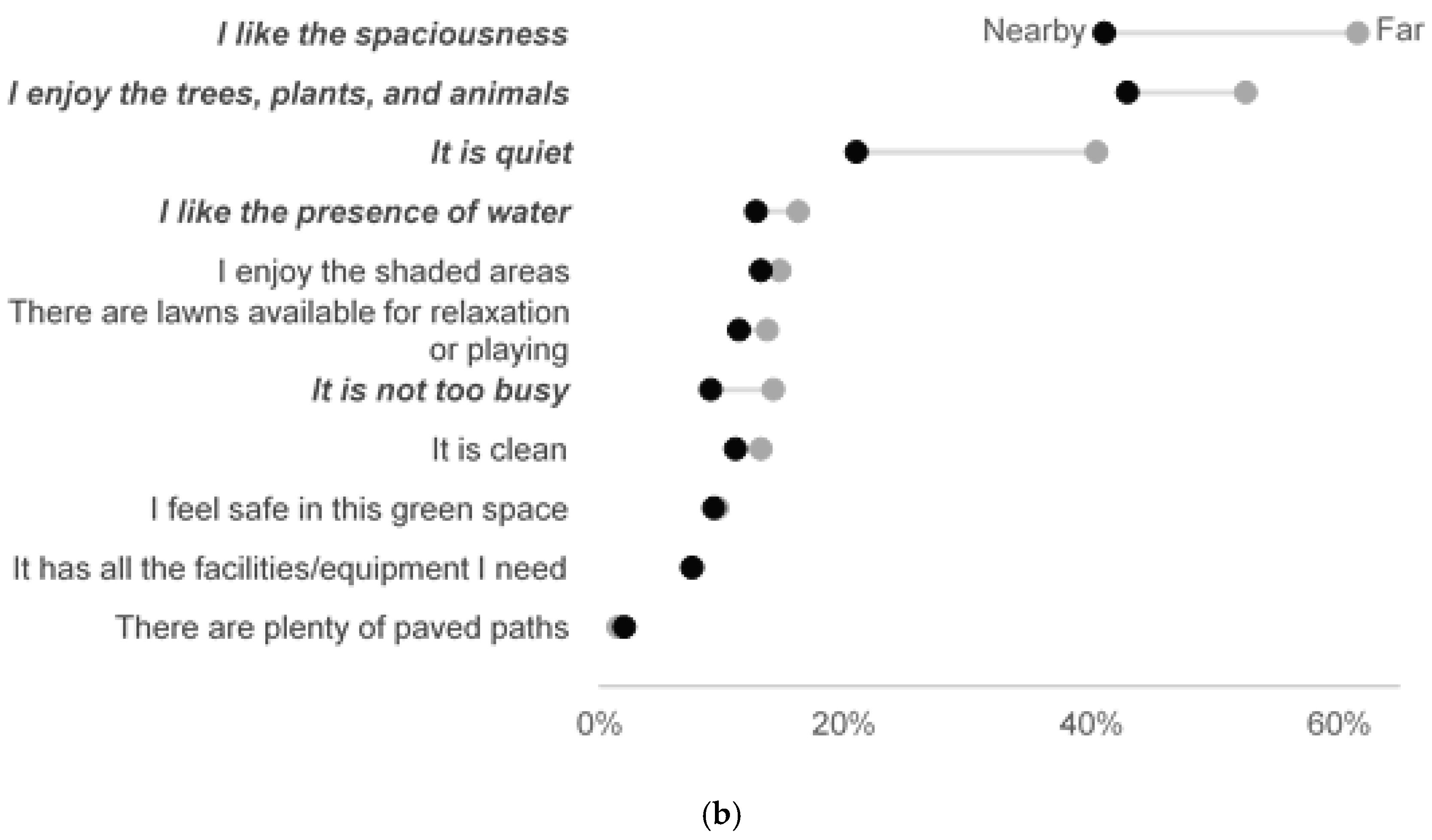1. Introduction
Understanding how urban residents make use of and value urban green spaces (UGS) is crucial for assessing how people relate to and derive benefit from urban nature. Much literature on ecosystem services, or the benefits provided by ecosystems, emphasizes the benefits of regulating ecosystem services (RES), or services gained from the regulation of ecosystem processes, like pollination and climate and water regulation [
1]. This literature tends to frame nature as an instrument to be utilized for human well-being. Recent literature instead promotes the relational value of nature, which emphasizes that ecosystem value is derived from people’s relationships and responsibilities to nature [
2,
3,
4]. Within the ecosystem services (ES) framework, exploring cultural ecosystem services (CES), or the intangible, human benefits derived from UGS, can help us understand the relational value people attribute to nature. CES arise from human-ecosystem interactions and are not inherent to biophysical structures [
5,
6]. They constitute ecosystems’ nonmaterial benefits to people, like recreation, sense of place, inspiration, opportunities for education, and spiritual enrichment [
1]. CES are also understood as the “filters of value through which other ecosystem services and nature derive importance” [
2] (p. 1463). They contribute to human well-being “in terms of the identities they help frame, the experiences they help enable, and the capabilities they help equip” [
6] (p. 212). CES can be important for fostering environmental stewardship and public engagement [
7]. Surveying and understanding of the local demand for CES therefore becomes important for a more responsive urban design and planning such that the supply of CES meets unique local demand. As Gehl expresses, the better a city space is, the more it will be used [
8]. This is particularly important for UGS, as benefiting from many of the services provided by UGS is dependent upon use. We must also gain an understanding of use-related and socio-demographic variations in UGS valuation to determine which communities are underserviced with existing UGS provisions.
Several frameworks have been developed to explain the link between the ES that emerge from ecosystems and the human benefits derived. One such commonly cited framework by de Groot et al. [
9] is the cascade model. In this model, biophysical structures and functions provide regulating and provisioning services. In turn, these services provide benefits, which gain economic or non-economic value based on the socio-cultural context in which they arise. For example, vegetation cover slows the passage of water, which provides flood protection and contributes to human safety and well-being. Value is therefore attributed to the biophysical structure and reflected in the form of protection policy against development on certain vegetated areas [
9]. Expanding upon the cascade model, Buchel and Frantzeskaki [
10] propose the “enriched cascade model”, in which they identify a context-dependent (i.e., place-specific, subjective) translation between biophysical structures and CES, from which benefits are perceived. Benefits from ES are mediated not only by the characteristics of the physical space but also by the individual characteristics of the people who use them (e.g., age, occupation, gender) and the societal context in which they live (e.g., their cultural background, their social networks) [
11]. Perception of ecosystem value is, therefore “the experienced and recognized ecosystem benefits by humans in their local context” [
10] (p. 170). Fish, Church, and Winter [
6] also make explicit the link between biophysical structures and the CES derived. In the framework which they propose biophysical domains provide opportunities for cultural practices to occur. These cultural practices are the activities performed that anchor people to each other and to their natural surroundings, like walking, relaxing, looking and listening, photography, and food production. Benefits that contribute to users’ sense of identities, experiences, and capabilities emerge from and shape the cultural practices performed in environmental spaces.
Building upon the existing literature on CES we have articulated a scheme (
Figure 1) that illustrates our view of the process by which individuals within specific physical and socio-economic contexts come to value ES provided by UGS (adapted from [
6,
10,
11]). Individuals are situated within and formed by societies. The values which they attribute to nature and urban green spaces are also shaped by the neighbourhood they live in. It is through this lens that they come into contact with and perceive UGS. Each UGS has a unique composition of physical characteristics (e.g., trees, water features, benches, paved paths, lawn), which, in conjunction with a user’s characteristics, values and use patterns, create distinct experiences of the space. Through interaction, individuals perceive the benefits provided by UGS. Valuation of UGS and their characteristics emerge as a result of the perceived benefits of these spaces. The CES delivered by a UGS are thus dependent upon the physical characteristics of the UGS and the experience/background of the individual using the UGS. Use is therefore a mediating factor between the supply of and benefits drawn from UGS. In this paper, we will focus on the role of socio-demographic characteristics and use patterns in how people perceive and value UGS. The role of neighbourhood characteristics will not be explicitly addressed in this study.
The use and valuation of UGS have been shown to differ based on the socio-demographic characteristics of users [
6,
11,
12,
13,
14,
15,
16]. In Guangzhou, China, Shan [
14] found that use and perception of UGS varied by gender, age, and occupation. Ode Sang et al. [
16] identified that women associate a greater sense of well-being with UGS than men, which increased with age for women but remained unchanged for men. Kloek et al. [
15] conclude that differences in recreational behaviour between cultural groups are complex and substantial.
While there is a growing body of literature pointing to the socio-demographic variations in use and valuation of UGS, little research has been conducted on how socio-demographic variations relate to bundles of CES (or the synergies between CES), rather than individual CES. As such, understanding of the variations in use and valuation by different socio-demographic groups remains understudied. Furthermore, existing research on ES mismatch, defined as “the differences in quality or quantity between the supply and demand of ES” [
17] (p. 320), primarily focused on identifying the gaps between supply and demand of regulating and provisioning ES [
18,
19,
20]. Assessment of the mismatch between perceived supply and local demand for CES provided by UGS should be integrated into planning UGS that meet the unique needs of local communities [
21,
22,
23]. In this study, we adopt the definitions of supply and demand of CES proposed by Tratalos et al. [
24], where supply is “the availability of opportunities for cultural practices within environmental spaces” and demand is “the needs, desires and intentions of people to exploit these opportunities” (p. 65). As they state, the supply of CES is largely determined by the “location and quality of individual environmental spaces”, while demand is “determined largely by the preferences, values and practices of local populations” (p. 68).
This research explores the valuation of UGS in relation to patterns of use and socio-demographic characteristics of individuals within the Brussels Capital Region. It also evaluates the CES mismatch between UGS supply and demand in the region. We then propose recommendations for urban planning based on the findings of this research. To achieve the research goals, the main research questions are: (1) Do different patterns of use correspond to distinct valuations of certain (bundles of) UGS characteristics? (2) How do socio-demographic characteristics mediate the valuation of UGS characteristics? (3) Are there mismatches between supply and demand of UGS characteristics and accessibility to UGS? (4) For which patterns of use/socio-demographic groups are these mismatches most prominent? (5) How can insights gained from this research inform urban planning? With this research, we aim to contribute to the scholarship on the valuation of nature in urban areas through the lens of CES. We identify whether and how specific socio-demographic variables relate to distinct patterns of use and valuation of UGS characteristics. We explore the notion of CES mismatch in the region to highlight for whom supply does not meet demand. From our findings, recommendations to urban planners are made such that planners can address not only the environmental need for UGS but the human need as well.
5. Conclusions
It is clear that the well-being of urban residents depends greatly on the ES provided by UGS. It is therefore imperative that valuation of CES and, in particular, use-related and socio-demographic variations in valuation are better understood. The process by which individuals come to value ES is dependent upon the experiences produced by use, socio-demographic factors, and accessibility to UGS.
Our study has demonstrated the importance of investigation into variations in the valuation of UGS characteristics. We find two clear bundles of users (nature-oriented and social) and differences in valuation between them. We also find that socio-demographic factors such as age, household composition, and use patterns do play a role in the valuation of UGS characteristics. Certain socio-demographic groups are inclined toward either nature-oriented or social use patterns. Older users tend to use UGS for nature-oriented purposes, while younger users and users with young children living in the household more often use UGS for social purposes. The latter appreciate the functional aspects of UGS, such as the provision of facilities. The presence of a child in the household corresponds with a perception of noise or lack of facilities as a negative characteristic of their UGS. This suggests that one’s living situation can impact liked and disliked UGS characteristics.
Of the two user groups, social users more often experience mismatch. Social users more often experience their UGS as being too busy, noisy, and lacking important facilities/equipment. We find that nature-oriented users travel farther to reach their most visited UGS. Additionally, nature-oriented users more often indicate that their UGS is too far away. We, therefore, hypothesize that nature-oriented users deliberately visit UGS that are further away, although there is a closer UGS. This may explain why nature-oriented users are more often satisfied with the UGS they use. It might also explain why they are less positive about UGS accessibility. To remedy this, more nature must be incorporated in city centres as, for example, pocket parks, less manicured enclaves within UGS, or zones with defined activities. Respondents with children tend to visit the nearest UGS. This indicates that the presence of a young child in the household may limit mobility to UGS and ultimately have an impact on satisfaction.
One of the limitations of our research is that survey respondents were overwhelmingly well-educated, with an overrepresentation of females. Several studies have found that women respond to surveys in greater proportion than men [
50,
51,
52]. People are also more likely to participate in a survey if they are interested in the topic [
53]. The overrepresentation of female respondents in our survey could indicate that women more often found the survey’s subject matter interesting. The overrepresentation of well-educated respondents could be due to the use of a map-based online survey. These surveys have been found to discourage participation by people who do not have computers and/or are not computer literate [
54]. In the following stages of research, it will be important to guide excluded populations through the survey in person. Future research will also explore how patterns of use, valuation, and mismatch vary based on the location of survey respondents, the social structure of the neighbourhoods in which they live, and the UGS they use.
Our research has demonstrated that socio-demographic factors and use patterns do relate to the valuation of UGS. Additionally, we find that certain users experience mismatch to a greater degree than others. We suggest that use-related preferences in the demand for UGS and identification of the gaps between supply and demand of UGS characteristics are integrated into planning UGS. This is important for designing UGS that meet the unique demands of communities.
